Numerical Simulation of Airflow in the Main Cable of Suspension Bridge with FPM Model
Abstract
1. Introduction
2. Development of the FPM Model
2.1. Obtaining Porosity of the Model
- This research used a 200 × 1120 pixels image to study the porosity of the main cable;
- The pixels with grayscale 0 were considered as pores for subsequent calculations;
- The influence of wrapping tape and other materials on the porosity was ignored;
- The porosity of the main cable was about 20% [18], which was used as a standard for judging the correctness of porosity in this study.
2.2. Establishment of Fracture Network
- For the convenience of the statistics, the internal fractures of the hexagonal strands were not considered;
- The outer layer of the main cable cross-section had a larger porosity. The establishment of the fracture network did not involve this part;
- The fractures had different lengths. Therefore, when counting the number of fractures, it was necessary to integrate the fractures. This study took a typical fracture as a standard fracture, counted the number of pixels of the standard fracture, and then calculated the number of fractures;
- This study used 1/4 of the main cable cross-section for analysis, found the probability of fracture, and extended the results to the entire main cable.
3. Numerical Method
3.1. Judgment of Flow Regime
3.2. Governing Equations
3.2.1. Porous Media Model
3.2.2. Fracture Flow Equations
3.3. Calculation of Permeability
3.3.1. Permeability Based on Kozeny–Carman Equation
3.3.2. Permeability Based on Numerical Simulation
3.3.3. Comparison and Optimization of Two Methods for Obtaining Permeability
3.4. Simulation Models and Boundary Conditions
4. Results and Discussion
4.1. Model Verification
4.2. Pressure Field
4.3. Velocity Field
5. Conclusions
- The FPM model for numerical simulation of the main cable mainly comprises two parts: an outer part with a porosity of 32.11% and an inner part with a porosity of 18.16%. The fractures are randomly distributed within the inner part with a probability of 31.37%;
- For airflow rates between 10 m3/h and 100 m3/h, the Reynolds number ranges from 0.506 to 5.060, indicating that the flow regime inside the main cable is laminar;
- The KC equation yielded different results than numerical simulations for the permeability of the porous medium. The permeability calculated through numerical simulation is more consistent with the actual situation;
- The permeability demonstrates an exponential relationship with porosity, when comparing the radial permeability and the longitudinal permeability under the same porosity, a difference of approximately one order of magnitude is observed;
- The pressure distribution along the main cable is not constant. Specifically, the pressure near the inlet exhibited a high external pressure and low internal pressure trend, while the opposite is observed near the outlet. This phenomenon can be attributed to the radial permeability of the main cable being lower than the longitudinal permeability, which may make it difficult for air to flow in the radial direction of the main cable;
- The fractures have an impact on the distribution of airflow inside the main cable, causing fluctuations in pressure and flow velocity near the fractures, and the impact varied at different positions. The presence of fractures inside the main cable facilitated the entrance of air, increasing the airflow velocity, and promoting smoother flow conditions. Optimizing the distribution of fractures can solve the problem of high humidity in some areas.
Author Contributions
Funding
Data Availability Statement
Acknowledgments
Conflicts of Interest
References
- Wang, D.; Ye, J.; Wang, B.; Wahab, M.A. Review on the service safety assessment of main cable of long span multi-tower suspension bridge. Appl. Sci. 2021, 11, 5920. [Google Scholar] [CrossRef]
- Jensen, J.L.; Lambertsen, J.; Zinck, M.; Stefansson, E. Challenges of water ingress into bridge cable systems. Steel Constr. 2017, 10, 200–206. [Google Scholar] [CrossRef]
- Karanci, E.; Betti, R. Modeling corrosion in suspension bridge main cables. II: Long-term corrosion and remaining strength. J. Bridge Eng. 2018, 23, 04018026. [Google Scholar] [CrossRef]
- Furuya, K.; Kitagawa, M.; Nakamura, S.-i.; Suzumura, K. Corrosion mechanism and protection methods for suspension bridge cables. Struct. Eng. Int. 2000, 10, 189–193. [Google Scholar] [CrossRef]
- Wei, Z.J.; Miao, X.P.; Sui, L.Y. Experimental study on flow resistance of dry air dehumidification for main cable of suspension bridge. J. China Foreign Highw. 2015, 35, 198–203. [Google Scholar]
- Chen, W.; Shen, R.; Que, M.; Gong, M.; Miao, R. New dehumidification system design and dehumidification test for the main cable of suspension bridge. J. Civ. Struct. Health 2021, 11, 1321–1335. [Google Scholar] [CrossRef]
- Wei, Z.; Peng, F.; Miao, X.; Jia, D.; Zang, Z.; Wei, H. Numerical calculation and experiment on the dehumidification system for main cable of suspension bridge. J. Eng. Thermophys 2016, 37, 2495–2501. [Google Scholar]
- Yao, Z.A.; Kang, Z.S.; Ni, Y.; Zuo, X.L. Research on the Air Flow Characteristics of the Suspension Bridge Main Cable by Steel Wire Stacking States. Sci. Technol. Eng. 2021, 21, 3807–3813. [Google Scholar]
- Ju, X.L.; Cao, S.G.; Cheng, J.X.; Cui, C.J.; Ma, R.J. Analysis of Temperature and Humidity Change inside Main Cables for a Suspension Bridge Considering Initial Water Accumulation. Highway 2019, 8, 72–78. [Google Scholar]
- Konishi, I. Latest Developments on Prefabricated Parallel Wire Strand in Japan. Ann. N. Y. Acad. Sci. 1980, 352, 55–70. [Google Scholar] [CrossRef]
- Zulian, P.; Schädle, P.; Karagyaur, L.; Nestola, M.G. Comparison and application of non-conforming mesh models for flow in fractured porous media using dual Lagrange multipliers. J. Comput. Phys. 2022, 449, 110773. [Google Scholar] [CrossRef]
- Ma, T.; Zhang, K.; Shen, W.; Guo, C.; Xu, H. Discontinuous and continuous Galerkin methods for compressible single-phase and two-phase flow in fractured porous media. Adv. Water Resour. 2021, 156, 104039. [Google Scholar] [CrossRef]
- Lee, J.; Babadagli, T. Effect of roughness on fluid flow and solute transport in a single fracture: A review of recent developments, current trends, and future research. J. Nat. Gas Sci. Eng. 2021, 91, 103971. [Google Scholar] [CrossRef]
- Sukanya, A.; Krishnamurthy, K.; Balakrishnan, T. Comparison of Preprocessing Techniques for Dental Image Analysis. Curr. Med. Imaging 2020, 16, 776–780. [Google Scholar] [CrossRef]
- Khalilabad, N.D.; Hassanpour, H. Employing image processing techniques for cancer detection using microarray images. Comput. Biol. Med. 2017, 81, 139–147. [Google Scholar] [CrossRef]
- Hoang, N.-D. Detection of surface crack in building structures using image processing technique with an improved Otsu method for image thresholding. Adv. Civ. Eng. 2018, 2018, 3924120. [Google Scholar] [CrossRef]
- Garg, N.; Garg, N. Binarization techniques used for grey scale images. Int. J. Comput. Appl. 2013, 71, 8–11. [Google Scholar]
- Guanzhong, P.; Xiaoping, M.; Daiyong, J.; Liangkai, F.; Chunyu, Z.; Luyan, S. Design research on dehumidification system for main cable of suspension bridge. J. Shenzhen Univ. Sci. Eng. 2013, 30, 111–220. [Google Scholar]
- Lipeng, S.; Baolong, L.; Yanfang, F. Image Recognition Algorithm Based on Artificial Intelligence and Machine Learning. Mob. Inf. Syst. 2022, 2022, 8125969. [Google Scholar] [CrossRef]
- Breiman, L. Random forests. Mach. Learn. 2001, 45, 5–32. [Google Scholar] [CrossRef]
- Macdonald, I.; El-Sayed, M.; Mow, K.; Dullien, F. Flow through porous media-the Ergun equation revisited. Ind. Eng. Chem. Fundam. 1979, 18, 199–208. [Google Scholar] [CrossRef]
- Ngameni, K.L.; Bandyopadhyay, S.; Miskimins, J.L. Statistical analysis of experimental studies of non-Darcy flow in proppant packs. J. Pet. Sci. Eng. 2022, 217, 110727. [Google Scholar] [CrossRef]
- Emmanouil, S.; Christos, G.; Georgios, A. Kozeny-Carman Equation and Hydraulic Conductivity of Compacted Clayey Soils. Geomaterials 2012, 2, 37–41. [Google Scholar]

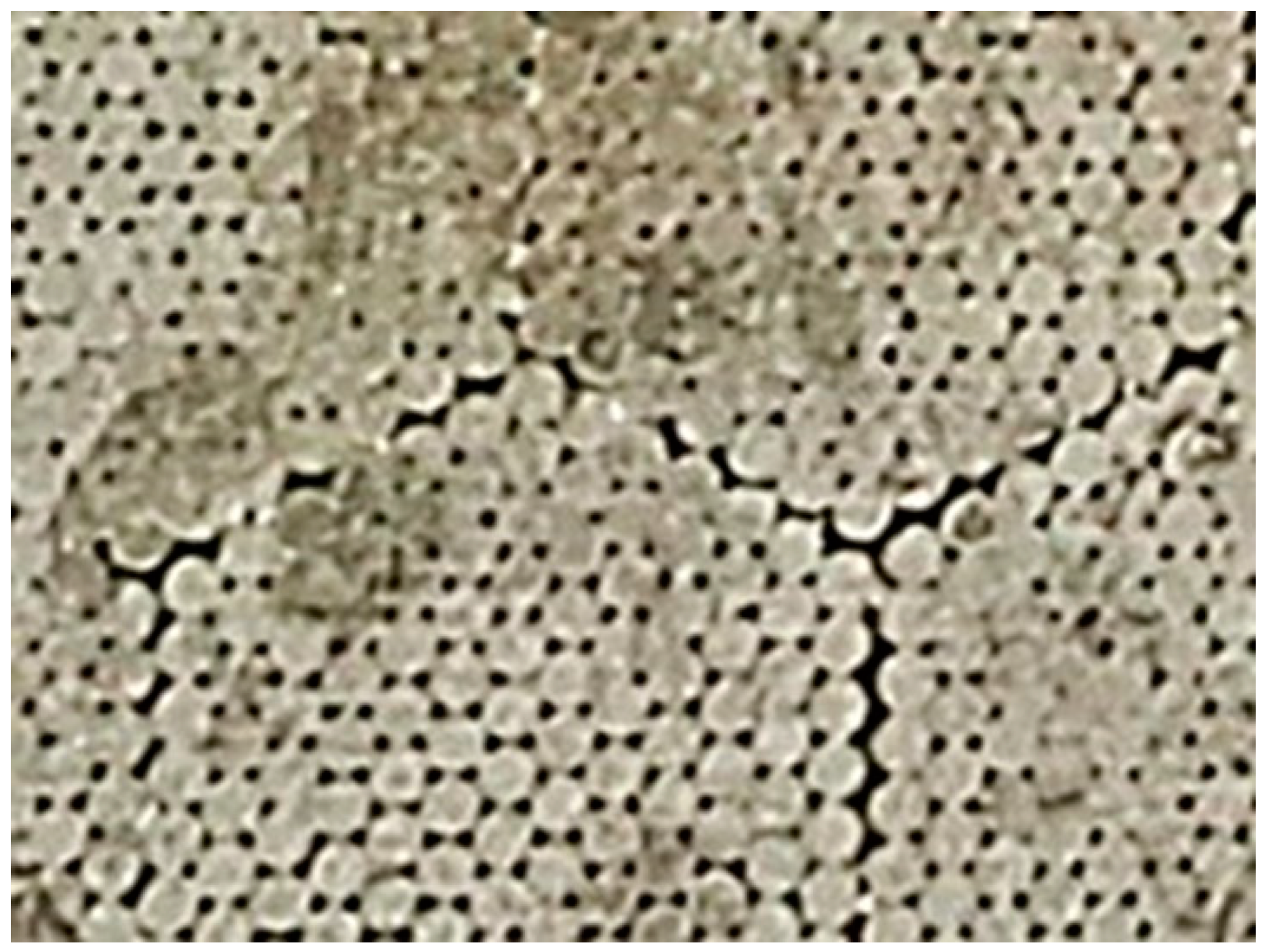
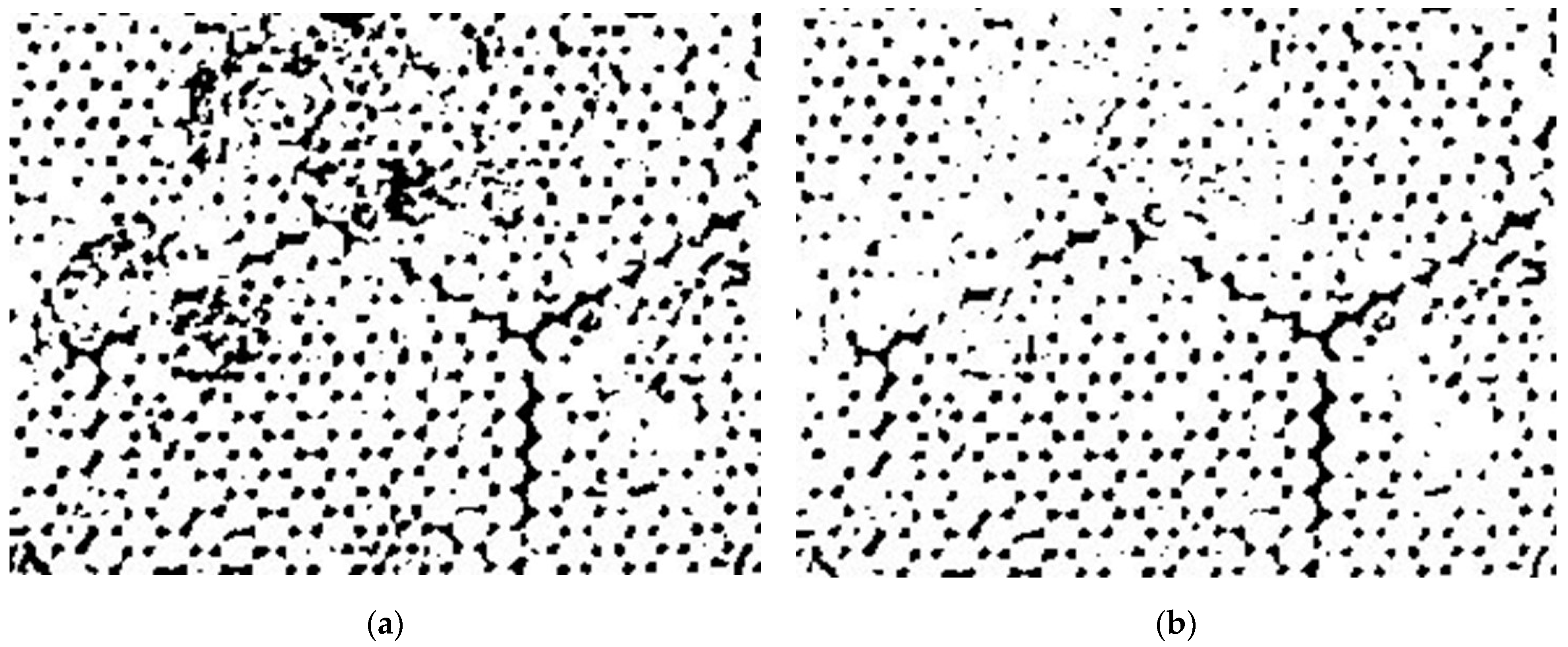
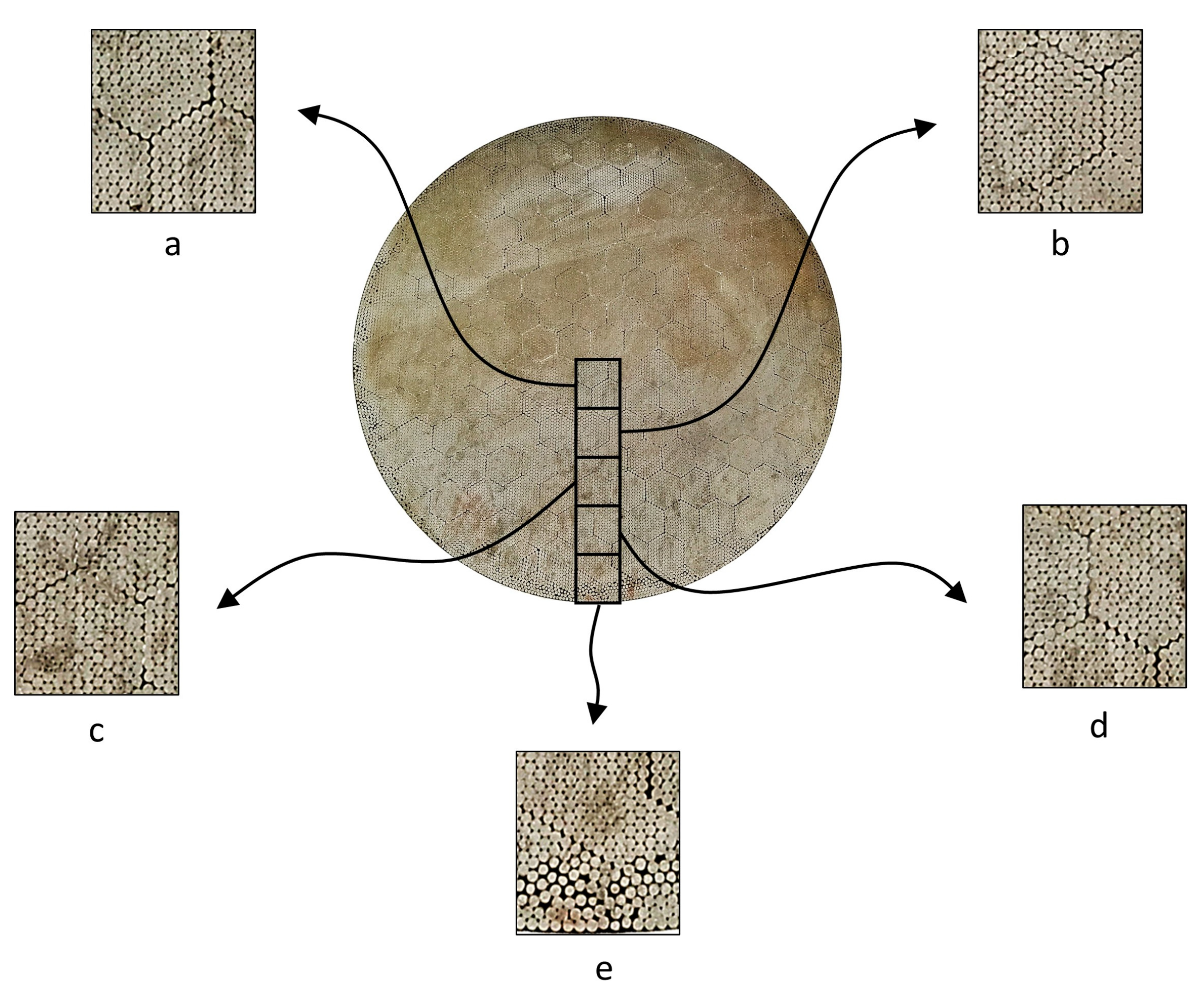

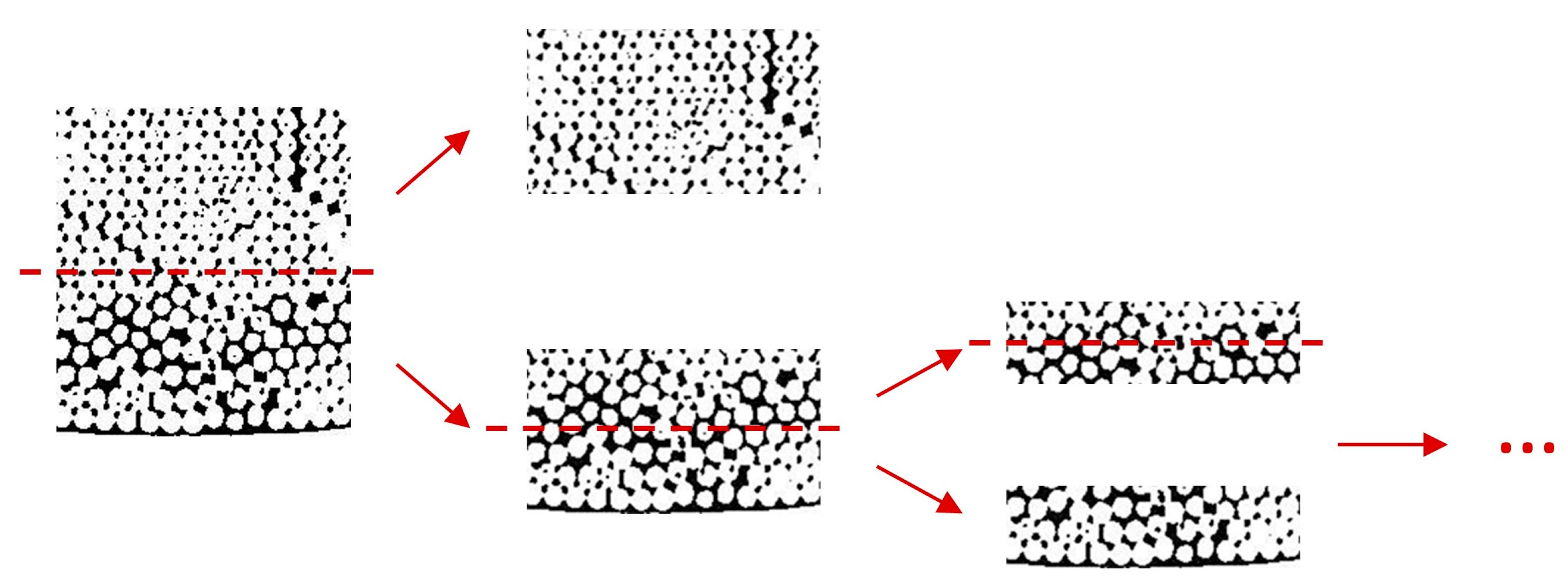

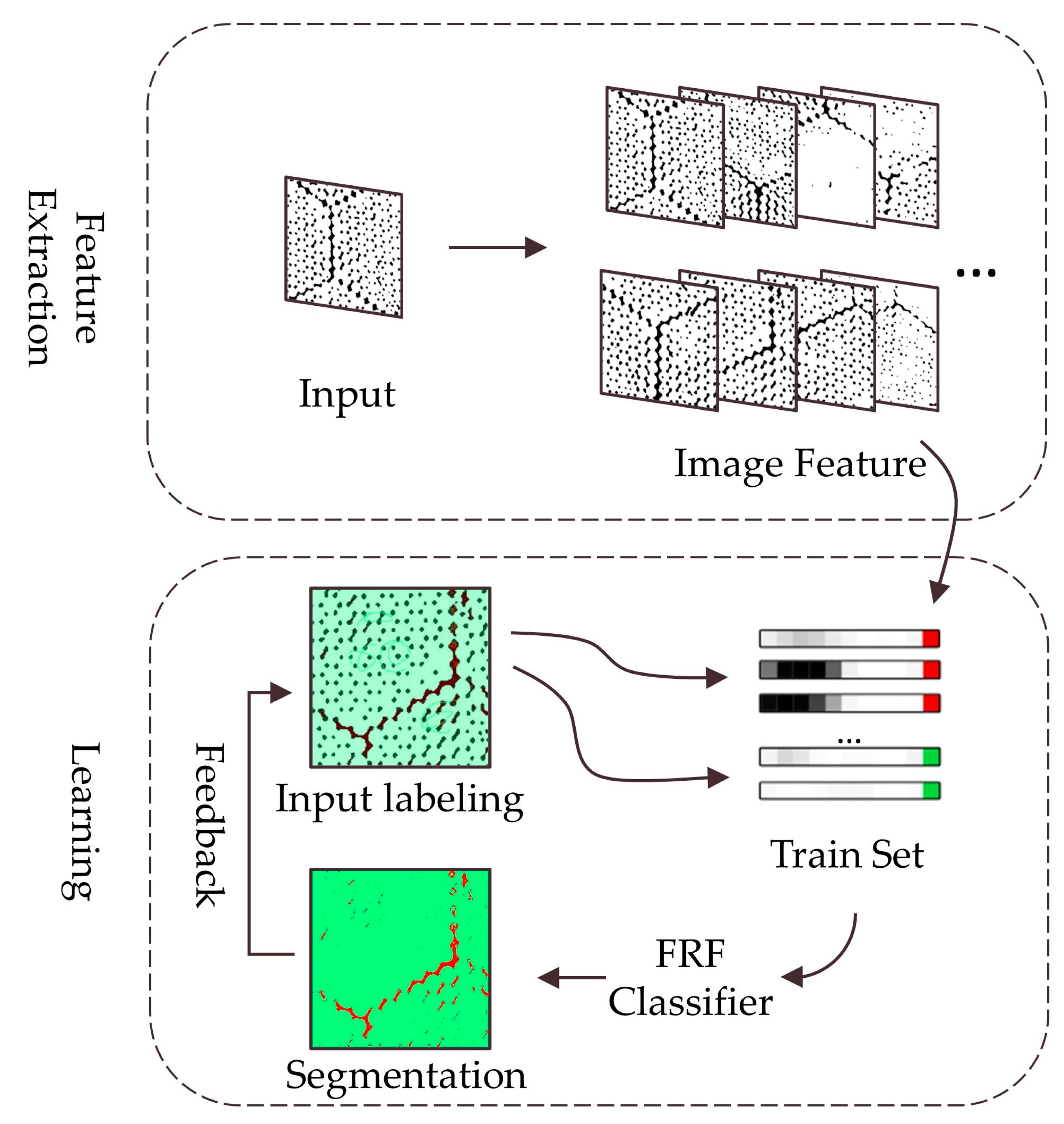
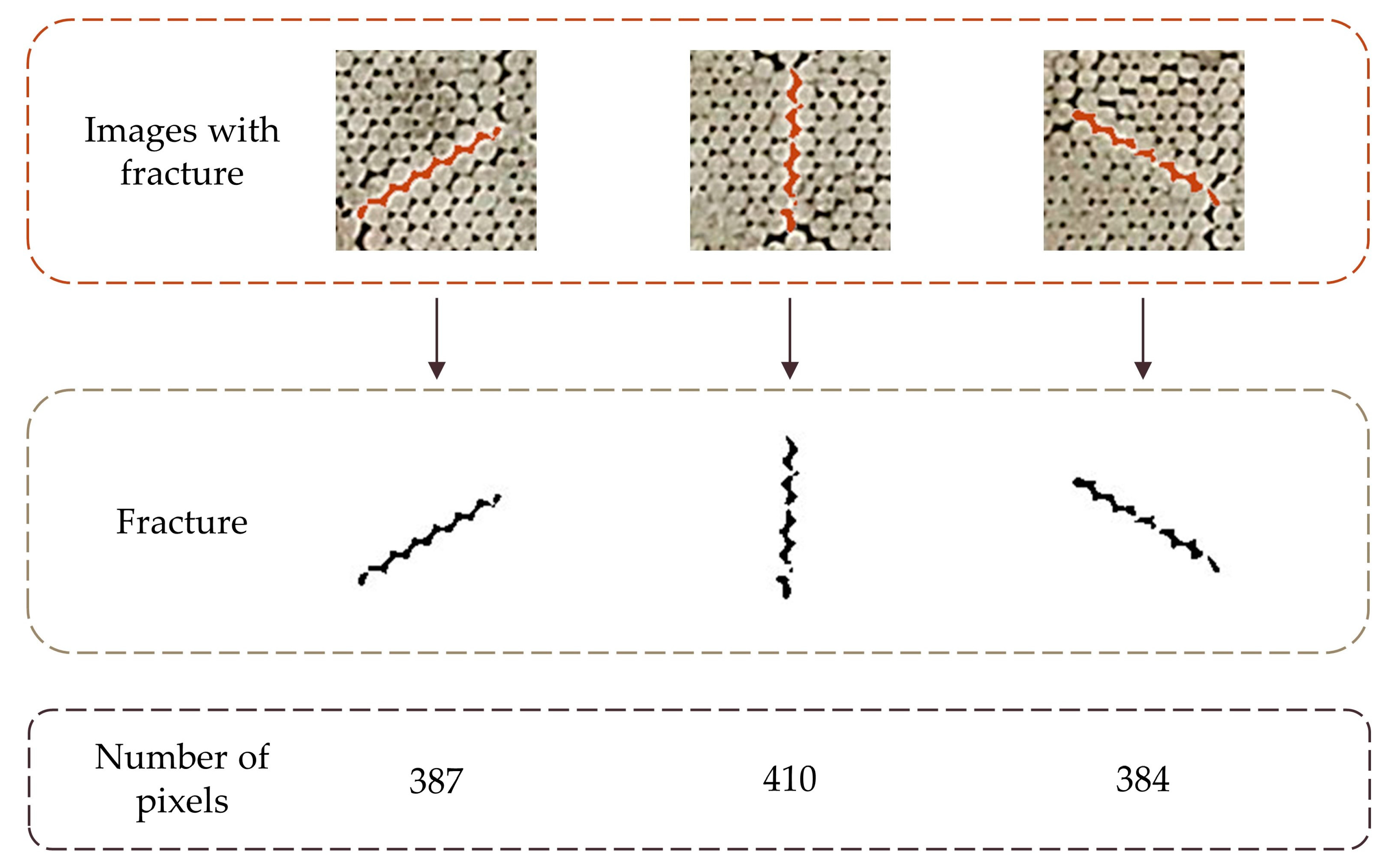
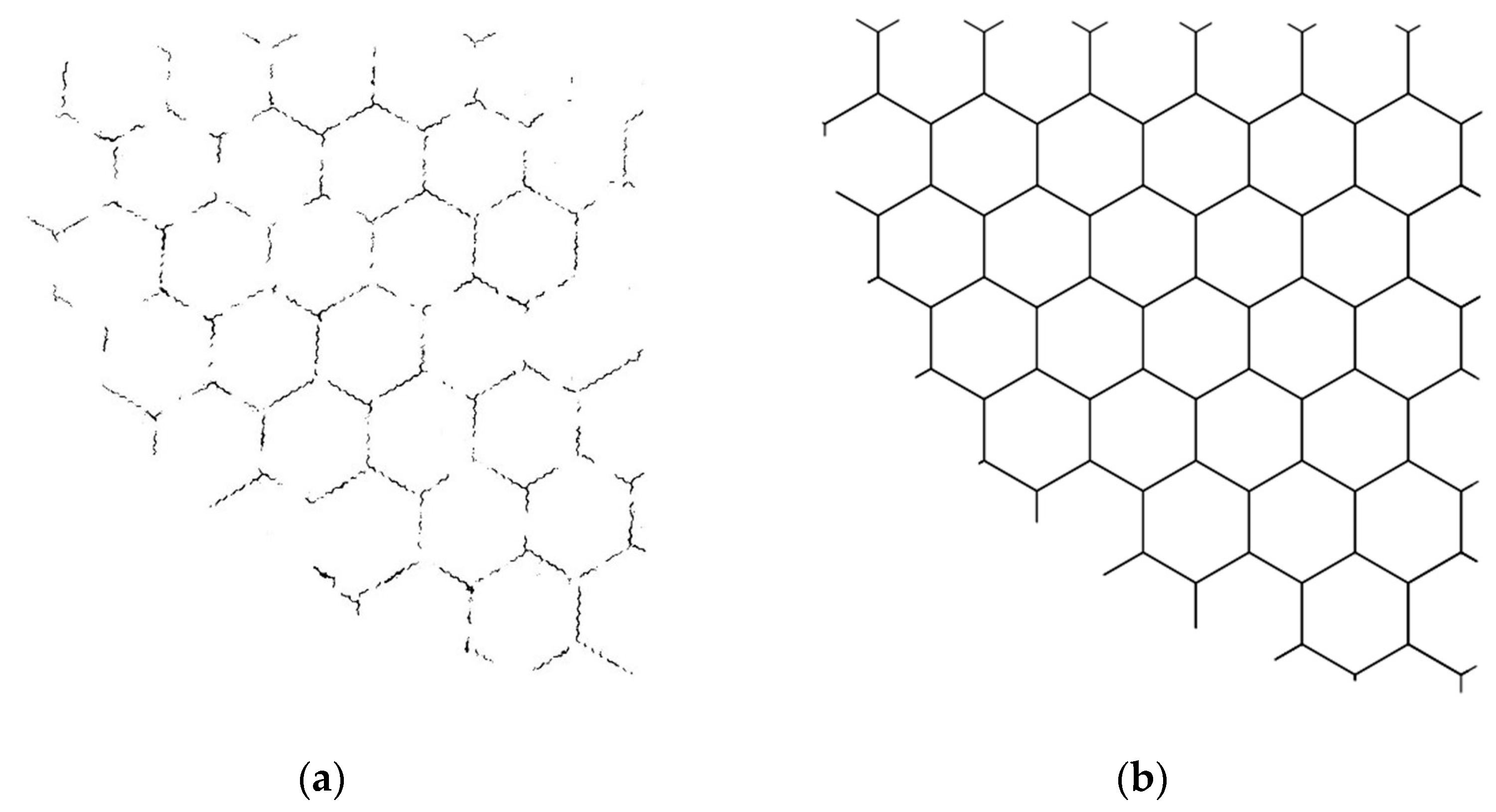


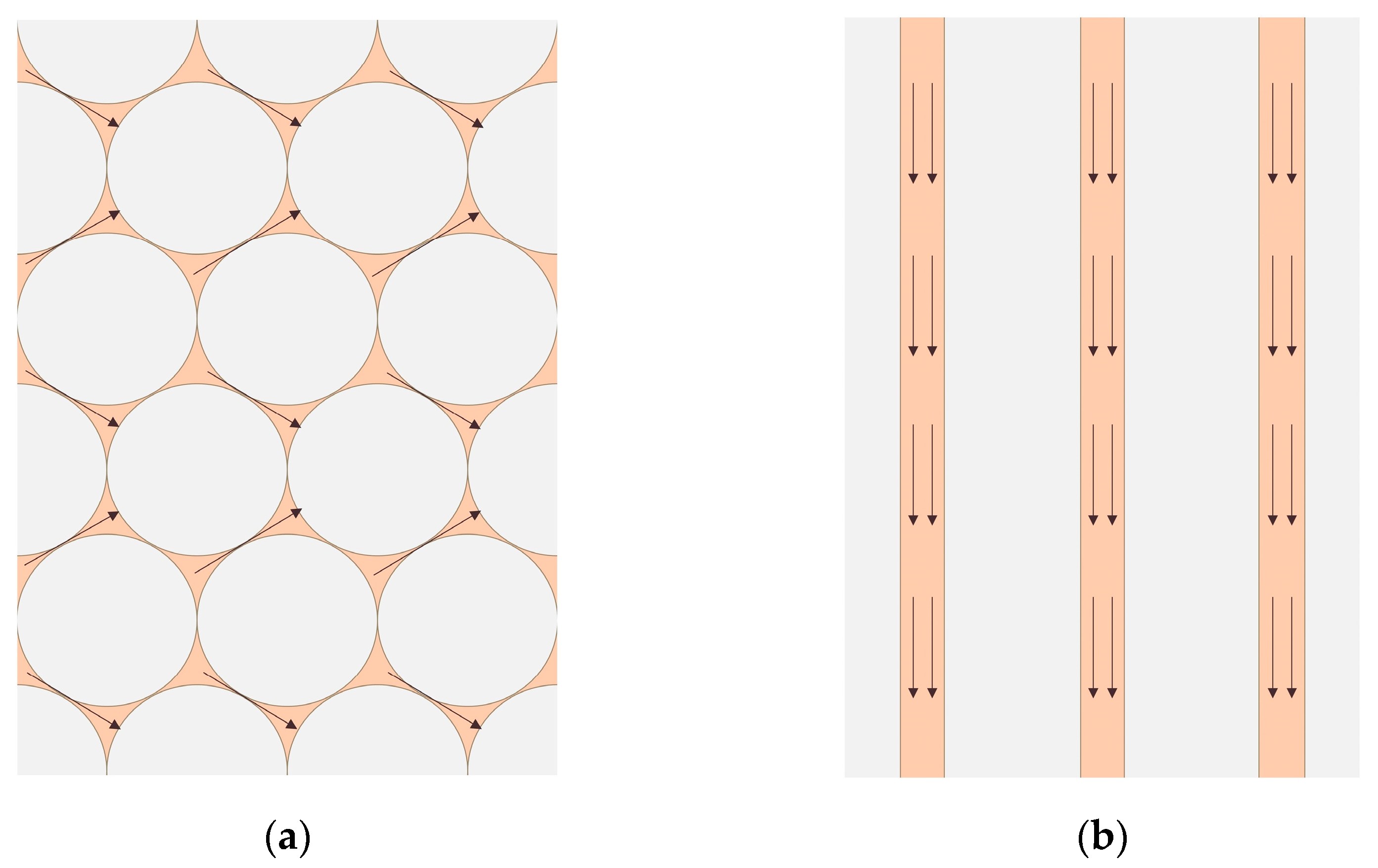
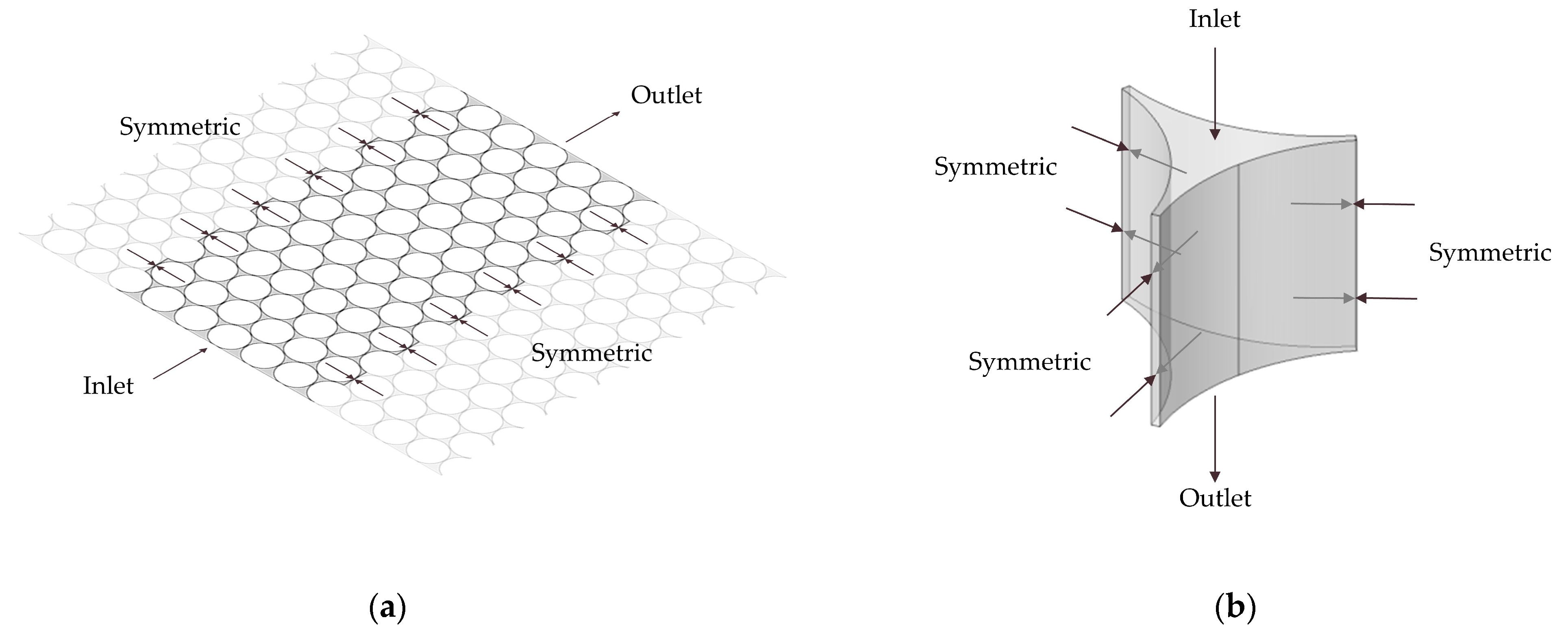
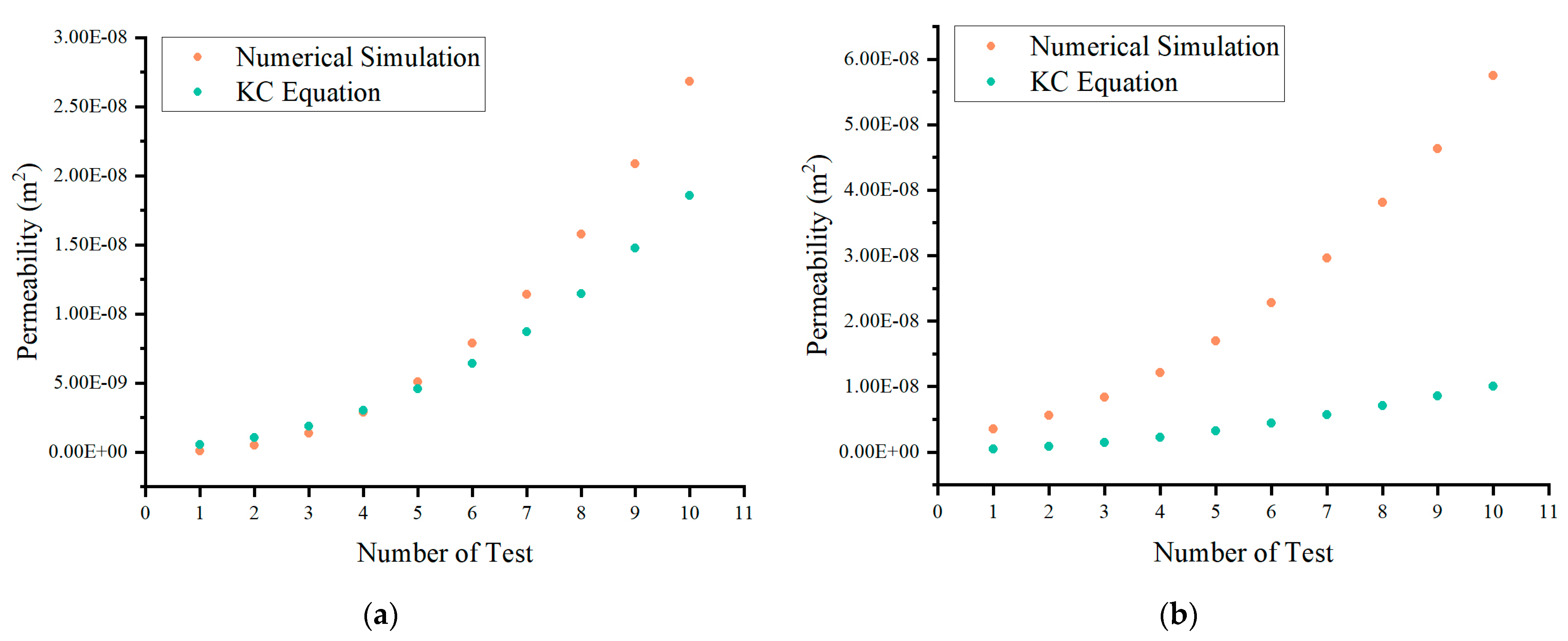

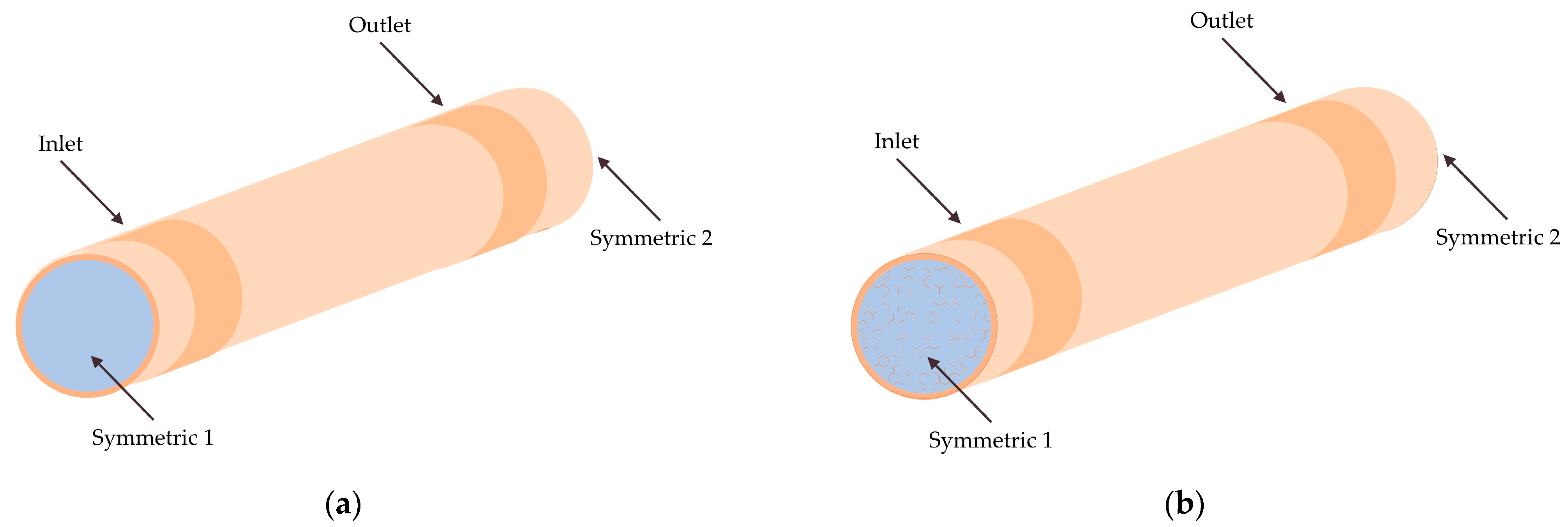
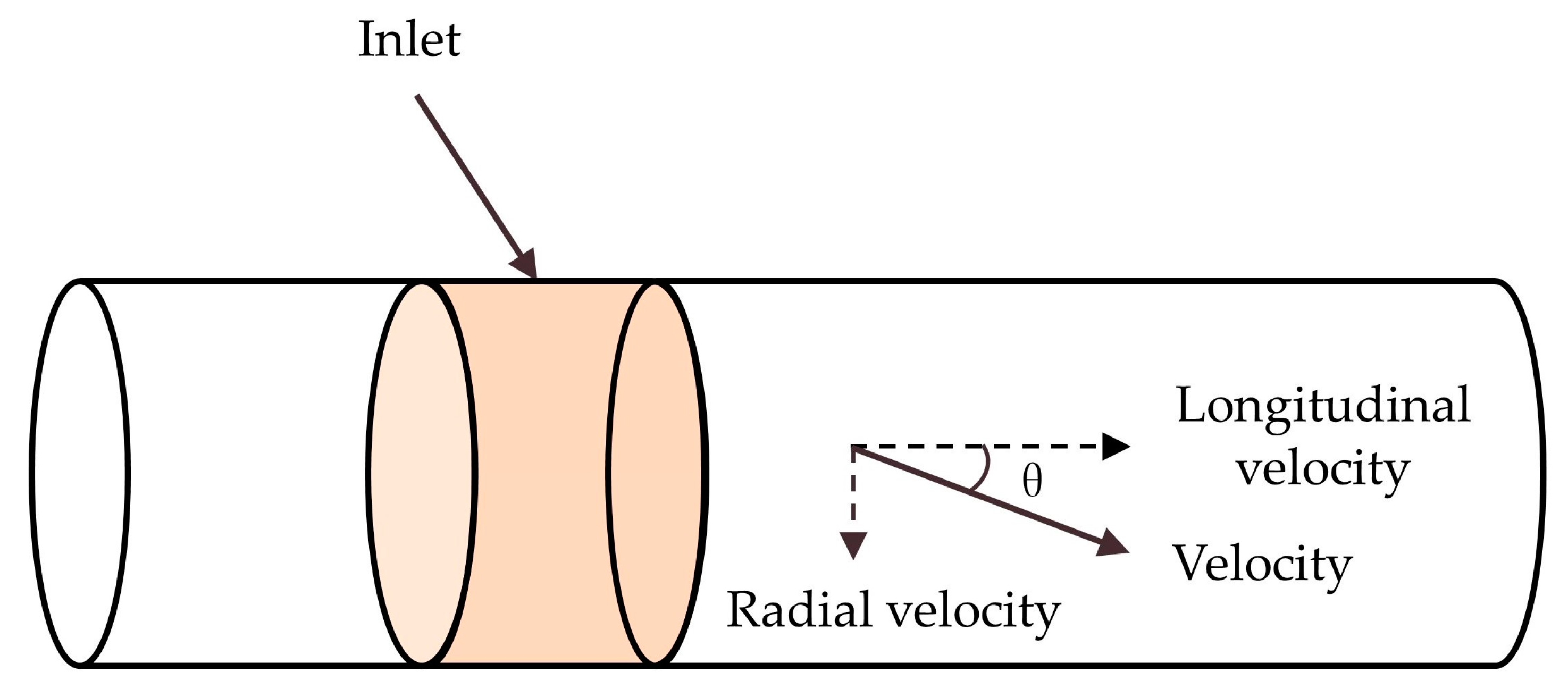


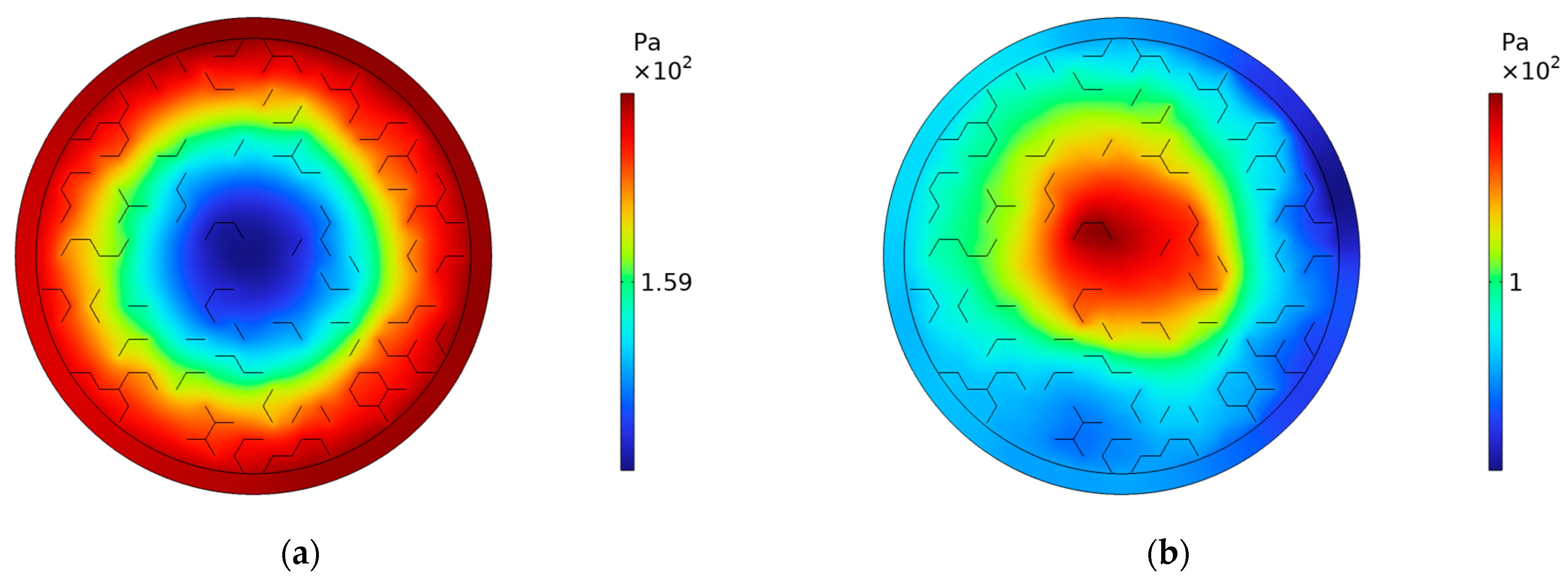
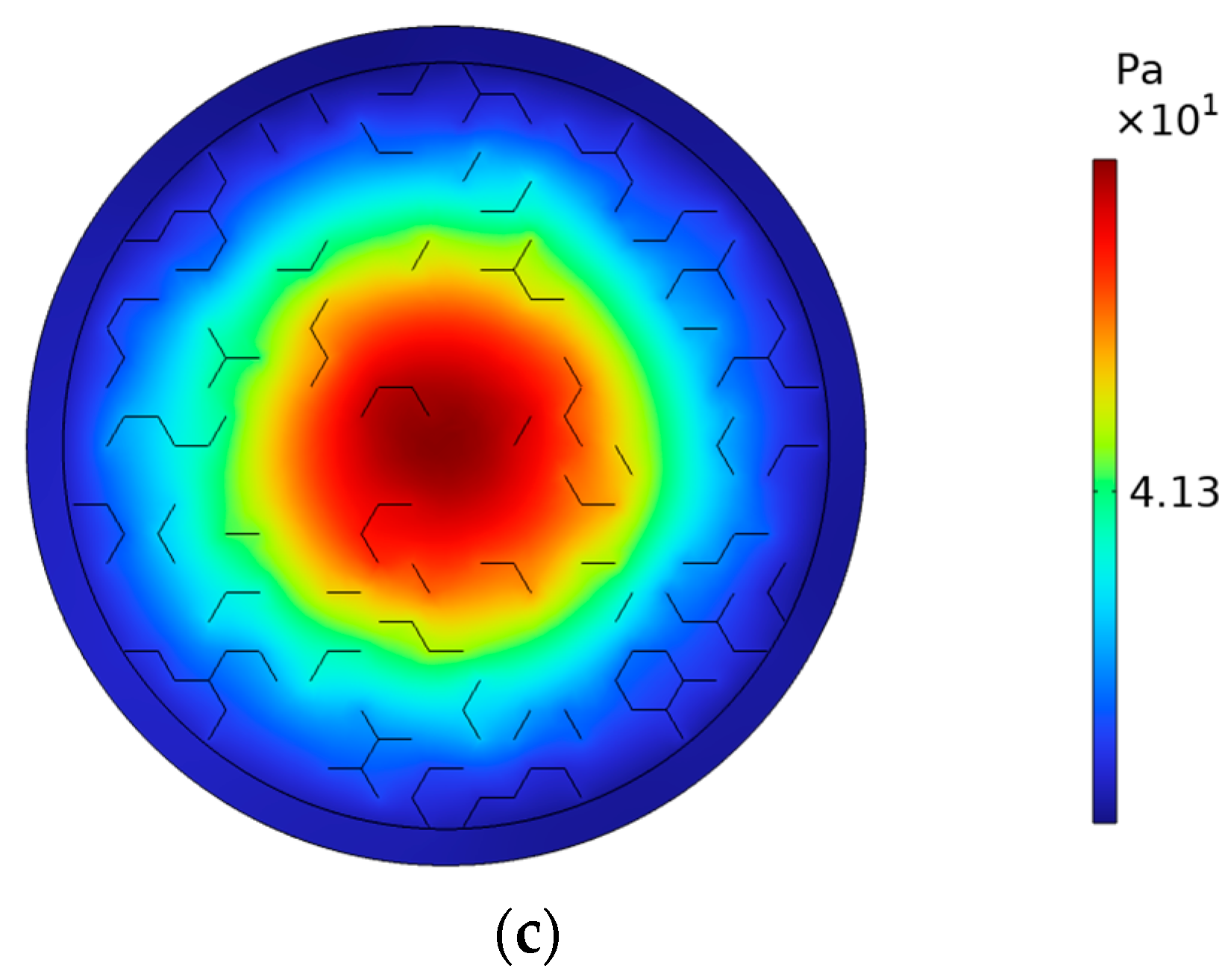
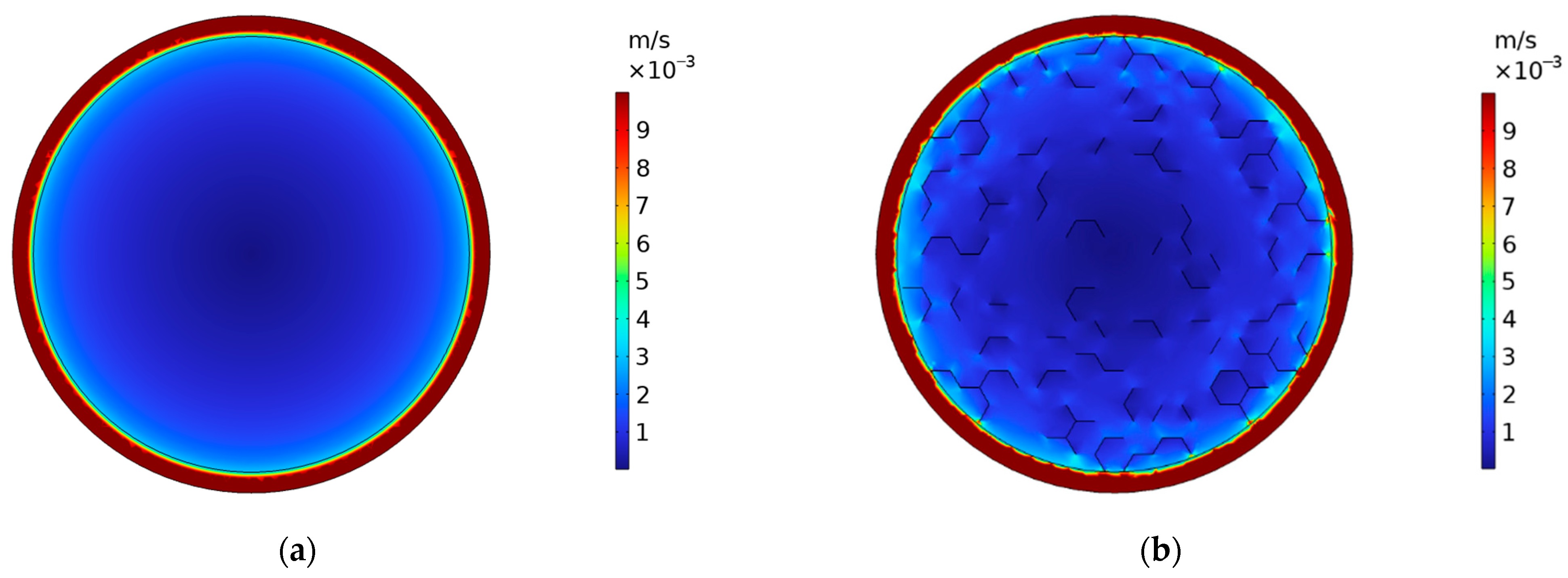
| Flow Rate (m3/h) | Re* |
|---|---|
| 10 | 0.506 |
| 20 | 1.012 |
| 30 | 1.518 |
| 40 | 2.024 |
| 50 | 2.530 |
| 60 | 3.036 |
| 70 | 3.542 |
| 80 | 4.048 |
| 90 | 4.554 |
| 100 | 5.060 |
| Name of Specific Data | Value | Unit |
|---|---|---|
| Inlet pressure | 200 | Pa |
| Outlet pressure | 0 | Pa |
| Radial permeability of inner part | 9.28239 × 10−10 | m2 |
| Radial permeability of outer part | 1.47342 × 10−8 | m2 |
| Longitudinal permeability of inner part | 7.98215 × 10−9 | m2 |
| Longitudinal permeability of outer part | 6.38173 × 10−8 | m2 |
| Length of the model | 13 | m |
| Resistance Loss along the Main Cable (Pa) | Length (m) | Specific Frictional Head Loss (Pa/m) |
|---|---|---|
| 982 | 27.94 1 | 35.17 |
| Position of the Cross-Section | High-Pressure Position of the Cross-Section | Airflow Direction of the Cross-Section | Max Differential Pressure of the Cross-Section (Pa) |
|---|---|---|---|
| 3 m | Outer | Outer to inner | 0.19 |
| 6 m | Outer | Outer to inner | 0.003 |
| 9 m | Inner | Inner to outer | 0.04 |
Disclaimer/Publisher’s Note: The statements, opinions and data contained in all publications are solely those of the individual author(s) and contributor(s) and not of MDPI and/or the editor(s). MDPI and/or the editor(s) disclaim responsibility for any injury to people or property resulting from any ideas, methods, instructions or products referred to in the content. |
© 2023 by the authors. Licensee MDPI, Basel, Switzerland. This article is an open access article distributed under the terms and conditions of the Creative Commons Attribution (CC BY) license (https://creativecommons.org/licenses/by/4.0/).
Share and Cite
Sui, W.; Guo, Z.; Guan, H.; Peng, P.; Liu, Q.; Zhang, X.; Cheng, X. Numerical Simulation of Airflow in the Main Cable of Suspension Bridge with FPM Model. Buildings 2023, 13, 1422. https://doi.org/10.3390/buildings13061422
Sui W, Guo Z, Guan H, Peng P, Liu Q, Zhang X, Cheng X. Numerical Simulation of Airflow in the Main Cable of Suspension Bridge with FPM Model. Buildings. 2023; 13(6):1422. https://doi.org/10.3390/buildings13061422
Chicago/Turabian StyleSui, Wenhao, Zhihang Guo, Hua Guan, Pei Peng, Qun Liu, Xiaochen Zhang, and Xiangdong Cheng. 2023. "Numerical Simulation of Airflow in the Main Cable of Suspension Bridge with FPM Model" Buildings 13, no. 6: 1422. https://doi.org/10.3390/buildings13061422
APA StyleSui, W., Guo, Z., Guan, H., Peng, P., Liu, Q., Zhang, X., & Cheng, X. (2023). Numerical Simulation of Airflow in the Main Cable of Suspension Bridge with FPM Model. Buildings, 13(6), 1422. https://doi.org/10.3390/buildings13061422









